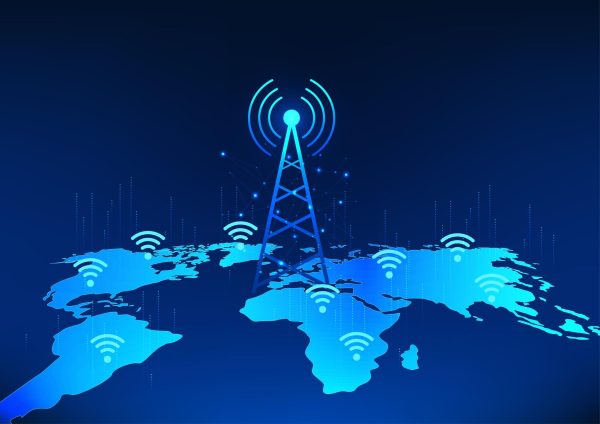
An innovation in connectivity, the fifth-generation mobile network (5G) has generated excitement and controversy in equal measure. While it promises faster internet speed and a more connected world, concerns have arisen regarding its potentially harmful effects on life as we know it.
Thought to be a helpful innovation, 5G technologies are harmful, though not in the way fear mongers and other related conspiracists believe it to be. That irrational fear of the unknown presented itself to me on the day of the nationwide emergency alert test.
I found myself lounging with a book in hand on the beach, soaking in the beautiful early October weather when at around 2:20 p.m. — the designated time of the alert — my cell phone alarm sounded, seemingly triggering a woman bathing in the water roughly 100 feet down the beach.
The woman instantly became confrontational, screeching from the water, “Turn that off! Turn that off! Some of us came here to escape all of that crazed madness!”
Rapidly approaching, the woman continued to angrily explain what she believed to be the harms of the emergency alert. She advised me to turn off my cellular device to adequately shield myself from the supposed “500 megahertz of electromagnetic frequencies” that the test alert would emit via my device.
I packed up and left the beach, hoping to find the tranquility I had before the bathing lady’s interruption. Understanding conspiracies and that fear of this new technology exists, the bathing lady sparked my curiosity to learn if any of her crazed yelling was logical or scientifically backed.
5G is the fifth generation of wireless technology for cellular networks, offering significantly faster data transfer speeds and enhanced capacity compared to its predecessors: 2G, 3G and 4G. It enables the seamless connectivity of many devices, including smartphones. To deliver these benefits, 5G relies on advanced network infrastructure and higher-frequency radio spectrum to provide faster and more reliable wireless communication.
Stony Brook University’s campus recently became home to a 5G tower, standing nearly 160 feet tall between the softball field and the Stony Brook Athletics Indoor Practice Facility. This tower is just one of 40 towers and 149 antennae within a three-mile radius of the University.
It has been heavily debated whether or not 5G poses a threat to human health. Scientific research on the potential health effects of 5G is ongoing, and there remains a limited consensus on the subject.
One of the primary concerns surrounding 5G technology is the perceived increase in radiation exposure. It has been argued that the higher-frequency electromagnetic waves in 5G networks may pose a risk to human health. However, it is important to note that radiofrequency (RF) radiation — including that used in 5G — is non-ionizing, meaning it lacks the energy to damage DNA or cells like ionizing radiation, such as X-rays or gamma rays, can. The Federal Communications Commission (FCC) has suggested a link between RF radiation exposure and specific health issues, while others have not found such a connection.
People have reported sensitivities to electromagnetic frequencies emitted via 5G technology and have symptoms such as headache, fatigue, stress, sleep disturbances, skin irregularities and aching muscles. A survey conducted by the World Health Organization (WHO) estimated the prevalence of electromagnetic hypersensitivity to be a few individuals per million within the population.
In addition to physical health concerns, some critics worry about the psychological and sociological effects of 5G technology, arguing that the constant connectivity enabled by 5G can lead to smartphone addiction, stress and reduced in-person interactions. While these concerns are valid, they are generally related to the use and overuse of the technology rather than the technology itself.
Government agencies and international organizations, including the Food and Drug Administration, WHO and FCC, have established safety guidelines and exposure limits for RF radiation. Some of the ways to protect yourself include “reducing the amount of time spent on a cell phone, using speaker mode to place more distance between your head and cell phone and avoiding making calls when the signal is weak, as this can cause cell phones to boost RF transmission power,” as stated in the safety guidelines.
These standards are designed to protect you from any potentially harmful effects, pointing out that the rollout of 5G networks is subject to compliance with these safety limits.
It is undeniable that 5G has the potential to encourage significant advancements in various fields, including healthcare, transportation and communication. Such technology may pave the way for more efficient vehicles and telemedicine. However, we should utilize it with a sense of responsibility.
Public awareness and education are vital in addressing the concerns surrounding 5G. Ensuring that the public understands the risks and benefits can help dispel fears, encourage rational discussions on the subject and avoid uncomfortable confrontations at the beach.
But the debate over the potentially harmful effects of 5G on human health is far from settled. While there are concerns, it is crucial to recognize that strict safety standards are in place to protect the public. As 5G technology is deployed, continued research, transparency and informed decision-making are essential. Rather than demonizing the technology, we should focus on harnessing its potential while remaining vigilant about its possible risks; in doing so, we can maximize the benefits of 5G and minimize any potentially harmful effects.











